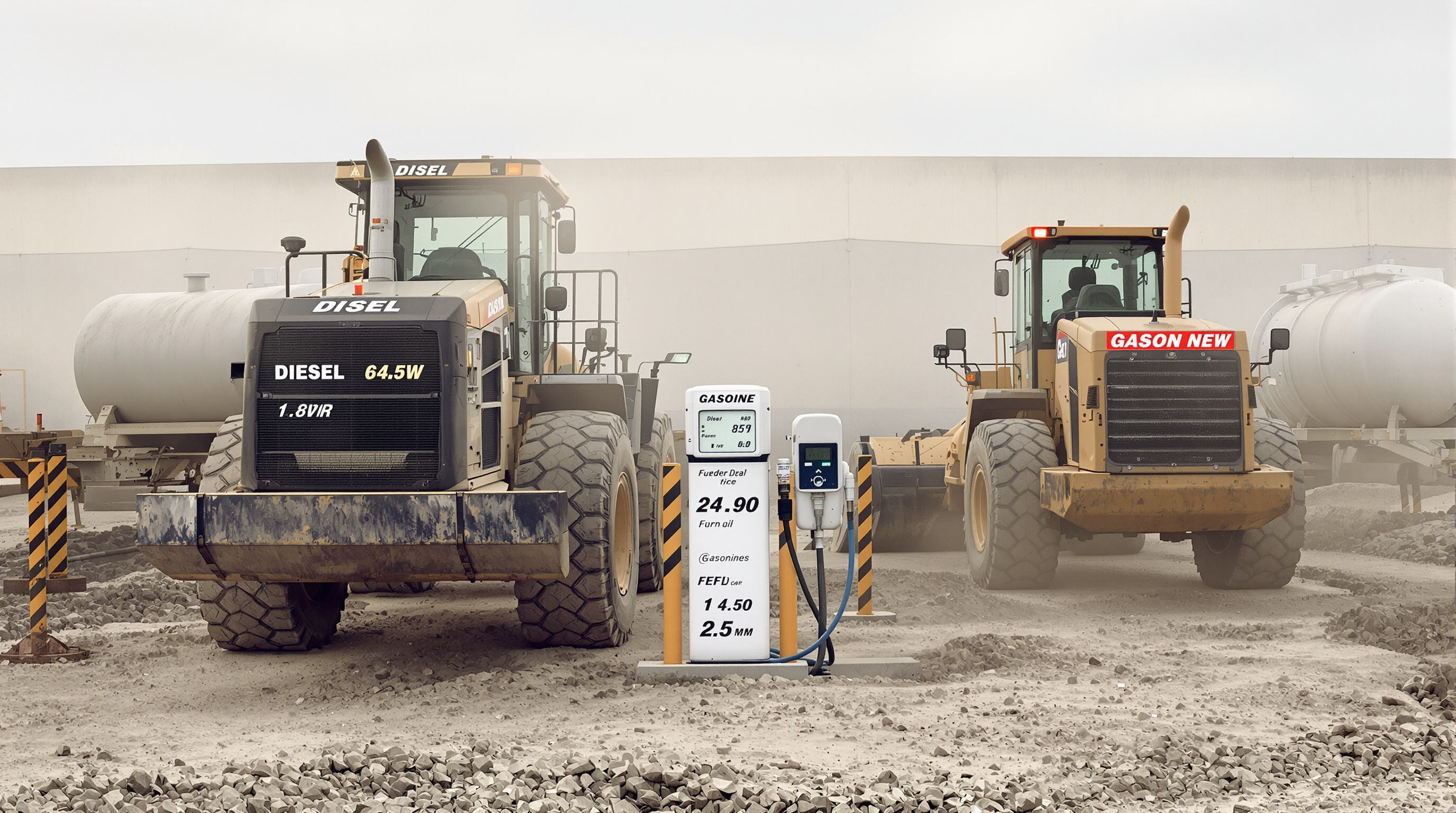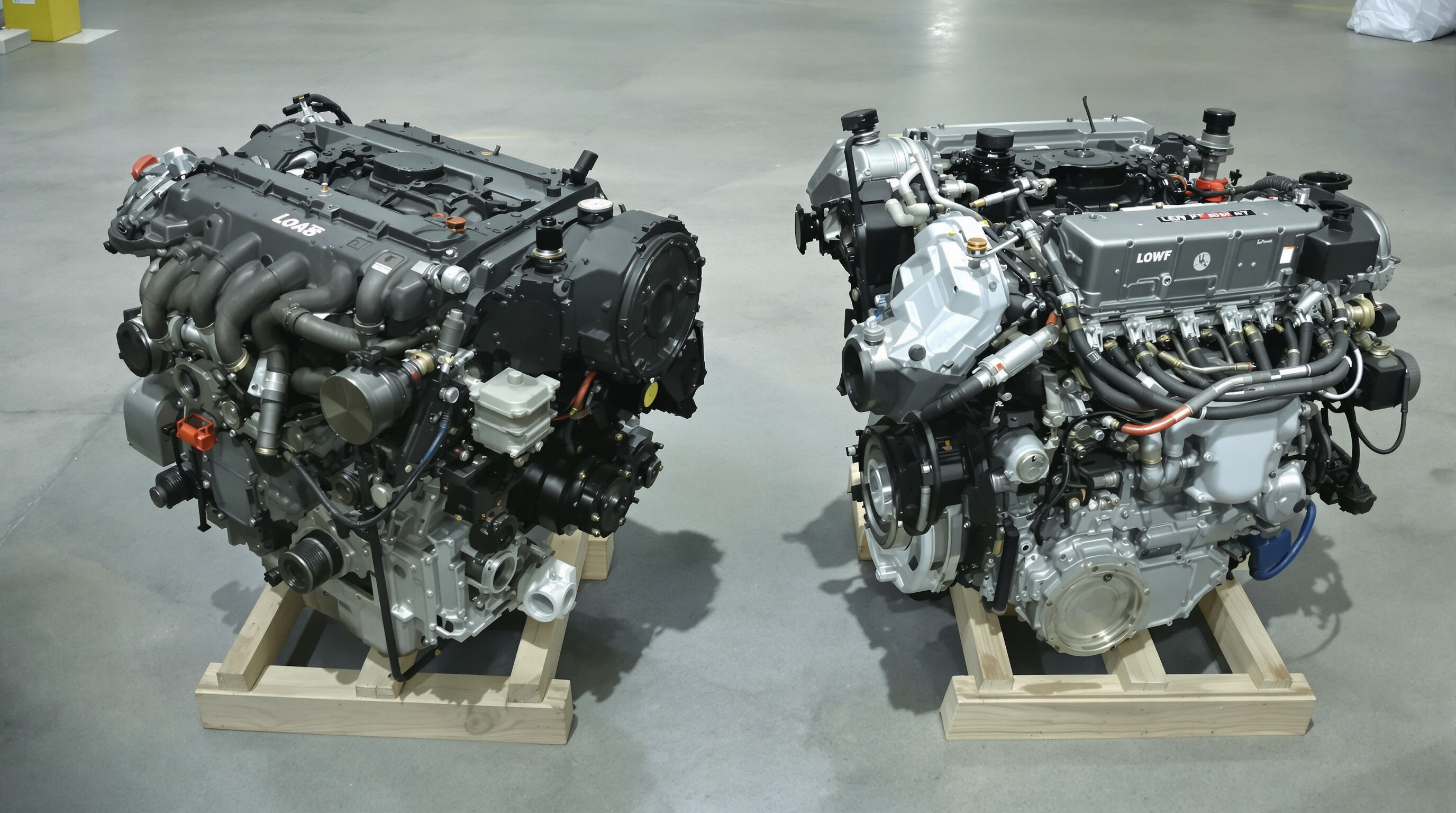What are the differences between gasoline and diesel loaders?
Performance Comparison: Gasoline vs Diesel Loaders
Torque and Power Output in Diesel and Gasoline Engines
Diesel engines generally produce around 25 to 35 percent more torque at lower RPMs compared to their gasoline counterparts, which is why they work so well for moving heavy materials around construction sites. The latest Construction Equipment Efficiency Report from 2023 shows that diesel wheel loaders hit their best performance between 1,200 and 1,800 RPM. Gasoline powered machines need to rev way past 2,500 RPM before they can match this kind of output. What does this mean in practice? Diesel loaders can handle bucket loads and tackle hills without constantly shifting gears, something that makes a big difference when working all day long on tough terrain.
Acceleration and Responsiveness in Gasoline Loaders
Gasoline-powered loaders offer quicker throttle response, accelerating 0.8—1.2 seconds faster than diesel models in light-duty grading tasks. Their lighter engine blocks—averaging 19% less weight—enhance maneuverability in tight urban construction environments. However, performance drops by 14—23% in temperatures above 95°F due to reduced volumetric efficiency under heat stress.
Power Delivery Under Load: Diesel Engine Advantages
When running through those tough, continuous heavy duty cycles, diesel loaders keep around 92 to 97 percent of their rated power output, while gasoline powered machines barely hit 78 to 85 percent. Why does this happen? Well, there are actually three main reasons behind this performance gap. First off, diesel engines have much higher compression ratios, typically around 18 to 1 compared to just 10 to 1 in gas engines. Then there's the matter of fuel delivery - diesel systems use precise direct injection that keeps combustion stable even under stress. And let's not forget about turbocharging, which becomes especially important when operating at higher elevations where air gets thinner. Real world testing in quarries located over 6,500 feet above sea level demonstrated these differences clearly. The diesel machines managed to move approximately 28 tons every hour, whereas their gasoline counterparts struggled with only about 21 tons per hour. This kind of difference really matters when productivity counts.
Impact of Engine Type on Loader Productivity
Over a 10-hour shift, diesel loaders experience 11% fewer idle cycles and complete tasks 19% faster in heavy-duty applications. Their consistent power delivery reduces transmission shifting by 40%, significantly lowering operator fatigue. In contrast, gasoline loaders achieve 8—12% higher productivity in short-cycle operations such as landscaping and light demolition.
Fuel Efficiency and Operating Costs of Gasoline and Diesel Loaders

Fuel Efficiency of Diesel vs Gas Engines in Heavy Equipment
Diesel engines are 20—30% more fuel-efficient than gasoline counterparts due to higher energy density and optimized combustion. A 2023 comparative study found diesel construction equipment averages 0.18 liters per kilowatt-hour, compared to 0.24 L/kWh for gasoline models.
| Metric | Diesel Loaders | Gasoline Loaders |
|---|---|---|
| Avg. Fuel Use (L/hr) | 12—16 | 18—22 |
| Cost Per Hour (USD) | $48—64 | $72—88 |
| Full-Tank Runtime | 8—10 hrs | 5—7 hrs |
Real-World Fuel Consumption in Wheel Loaders
In extended operation, diesel’s efficiency advantage becomes more pronounced. During material handling, gasoline loaders consume 20 liters per hour, while diesel equivalents use just 14 liters for the same workload—a 30% reduction. At current fuel prices, this translates to $280 in daily savings per machine.
Long-Term Cost Analysis: Fuel and Operating Expenses Over 5,000 Hours
Over 5,000 operating hours, diesel loaders save approximately $32,000 in fuel costs compared to gasoline models. When combined with a 14% reduction in service interventions, as documented in equipment lifecycle studies, total operating savings exceed $45,000 per machine.
Durability, Lifespan, and Long-Term Reliability

Engine Longevity in Heavy-Duty Applications: Diesel vs Gasoline
In the world of heavy machinery, diesel engines tend to outlast their gasoline counterparts by roughly two to three times. Take construction site diesel loaders for instance these machines often hit around 10k to 15k service hours before needing major work, whereas gas powered versions usually clock in at about 6k to 8k hours according to the Equipment Reliability Report from 2023. What makes diesels so tough? Their insides are built like tanks with beefier parts throughout. The cylinder walls are much thicker, and those valve seats get special hardening treatments. All this extra strength helps them survive the brutal conditions created by those high compression ratios that characterize diesel operation.
Diesel Engine Design for Endurance in Construction Equipment
Manufacturers enhance diesel loader durability through:
- Torque-focused combustion timing to reduce RPM stress
- Forged steel crankshafts with 40% greater fatigue resistance
- Oversized oil pans that maintain lubrication at angles over 35°
- Reinforced piston crowns capable of withstanding 3,200+ PSI combustion pressures
These features allow diesel engines to retain over 92% of their original performance after 8,000 hours in demanding environments like quarries and demolition sites.
Are Gasoline Loaders Underrated for Long-Term Use?
Gasoline powered loaders tend to show about 18 to 22 percent more wear on parts when pushed hard all day long, but these machines still work pretty well for lighter jobs like yard maintenance stuff. Most folks report getting around 7,500 operating hours before major repairs are needed. Manufacturers have made some real improvements too. Newer direct fuel injection systems combined with special aluminum coating treatments mean today's engines last much longer between services compared to what was available back in the early 2010s. We're talking roughly 20% better service life actually, although this only holds true if operators stick to the manufacturer specs and don't overload them beyond their capacity limits.
Maintenance Requirements for Gasoline and Diesel Loaders
Frequency and Complexity of Maintenance by Engine Type
Maintenance on diesel loaders happens about 38 percent more often compared to their gasoline counterparts according to the Heavy Equipment Maintenance Report from 2023. Oil changes for these machines typically come around every 250 to 300 operating hours while gas powered units can go between 400 and 500 hours before needing similar service. The good news is that diesel air filters tend to stick around longer lasting about 500 hours versus just 300 for gasoline models. However this advantage gets offset somewhat by the added complications of modern emissions systems which make things more complicated overall. On the flip side, gasoline engines generally have simpler service requirements since there are fewer parts involved. Still they do need consistent attention to the ignition system though. Spark plugs usually need replacing after approximately 1,000 hours of operation and technicians should also perform seasonal ethanol fuel flushes to avoid problems like vapor lock down the road.
Common Maintenance Issues in Gasoline-Powered Loaders
High-RPM operation accelerates wear on critical components:
- Ignition coils: Susceptible to heat-related failure during prolonged grading
- Throttle bodies: Carbon buildup reduces responsiveness by 12—18% annually
- Fuel injectors: Ethanol-blended fuels increase clogging risk by 22%
These issues contribute to higher long-term operating costs, even with lower initial service expenses. Fleet managers often overlook the labor involved in carburetor rebuilds or intake manifold gasket replacements in older gasoline models.
Performance in Extreme Conditions and Challenging Environments
Field Reliability Under Heavy-Duty and Continuous Operation
When it comes to long hours on the job, diesel loaders really stand out. They keep about 15 to 20 percent more torque going compared to gas powered ones after several hours of work according to some recent studies from the Department of Energy. The heavy duty build makes these machines last longer in tough environments like mines and quarries where they're constantly handling big weights. Gas engines aren't as tough when pushed hard all day, but they do handle cooling better which is why many people still choose them for shorter tasks or projects that don't require non stop operation.
Cold Starts, Heat Tolerance, and Climate Impact on Engine Performance
According to a recent Defense Systems Engineering study from 2024, gas engines kick into action about 40 percent quicker than diesel ones when temps drop to minus 20 degrees Celsius because they need less heat to ignite. But let's not forget about those big diesel machines either. At high temps around 50 degrees Celsius, these workhorses still manage to hold onto roughly 85% of what they're supposed to deliver, while gas powered versions struggle down to just 72%. The good news for diesel fans is that newer models come equipped with improved glow plug tech. These modern turbocharged diesels cut down on those annoying cold start waits by almost two thirds compared with the old school versions from back in the day.
Operational Considerations: Altitude, Terrain, and Workspace Constraints
Gasoline powered loaders tend to hold onto their power better at elevations above 2,500 meters compared to diesels. The reason? Naturally aspirated engines have simpler air fuel management systems that work more reliably in thin air conditions. Plus, these machines are generally much lighter too, coming in around 220 pounds less than similar diesel models. This makes them easier to maneuver in tight spots where space is limited. On the flip side, when it comes to steep hills over 15 degrees, diesel loaders really shine. They deliver that precise low RPM torque needed to push heavy payloads uphill without slipping or stalling, which is why many operators still prefer them for mountainous terrain despite the weight disadvantage.

